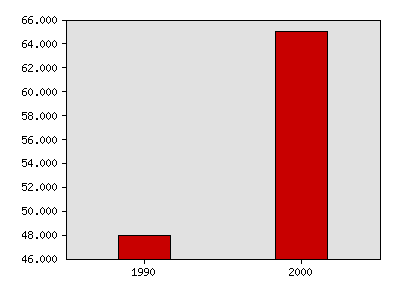What were things like in 2002?
The following idicator summary is from the 2002 Minnesota Milestones and does not neccessarily reflect the current data trends.Indicator : Employment of people with disabilities
Rationale: Employment is a key indicator of the extent to which people with disabilities participate fully in society.
About this indicator: The employment rate of people who have disabilities rose from 48 percent in 1990 to 65 percent in 2000. However, the 1990 rate was based on the 16 to 64 age group, while the the 2000 rate was for the 21 to 64 age group. The passage of the Americans with Disabilities Act in 1990 required government to monitor the status of people with disabilities. Employment of people with disabilities was first measured in the 1990 Census.
People with disabilities are far less likely to be employed than able-bodied people. A work disability is defined as a health condition that lasts six or more months and limits the type or amount of work a person can do. According to federal employment data, 83 percent of all Minnesotans age 16 to 64 were employed in 2000 (see indicator #39, Employment of working-age population).
Employment rate of people who have disabilities

| Year | Data |
|---|---|
| Employment rate of people who have disabilities, U.S. Bureau of the Census | |
| 1990 | 48% |
| 2000 | 65% |
For comparison: The national rate in 2000 was 56.6 percent, almost 9 percentage points lower than Minnesota's rate.
Things to think about: Employment of people with disabilities sometimes requires employers to make workplace accommodations, and often necessitates an array of support services ranging from job training to transportation.
Sources:U.S. Bureau of the Census, www.census.gov
Related 2002 Milestones indicator:
Other related indicators:
- Discrimination complaints filed with federal, state and local human rights agencies (U.S. Equal Employment Opportunities Commission; Minnesota Department of Human Rights; Minneapolis Civil Rights Department; St. Paul Human Rights Department)
- People with disabilities who are on waiting lists for community services (Minnesota Department of Human Services, www.dhs.state.mn.us)
Local data:





